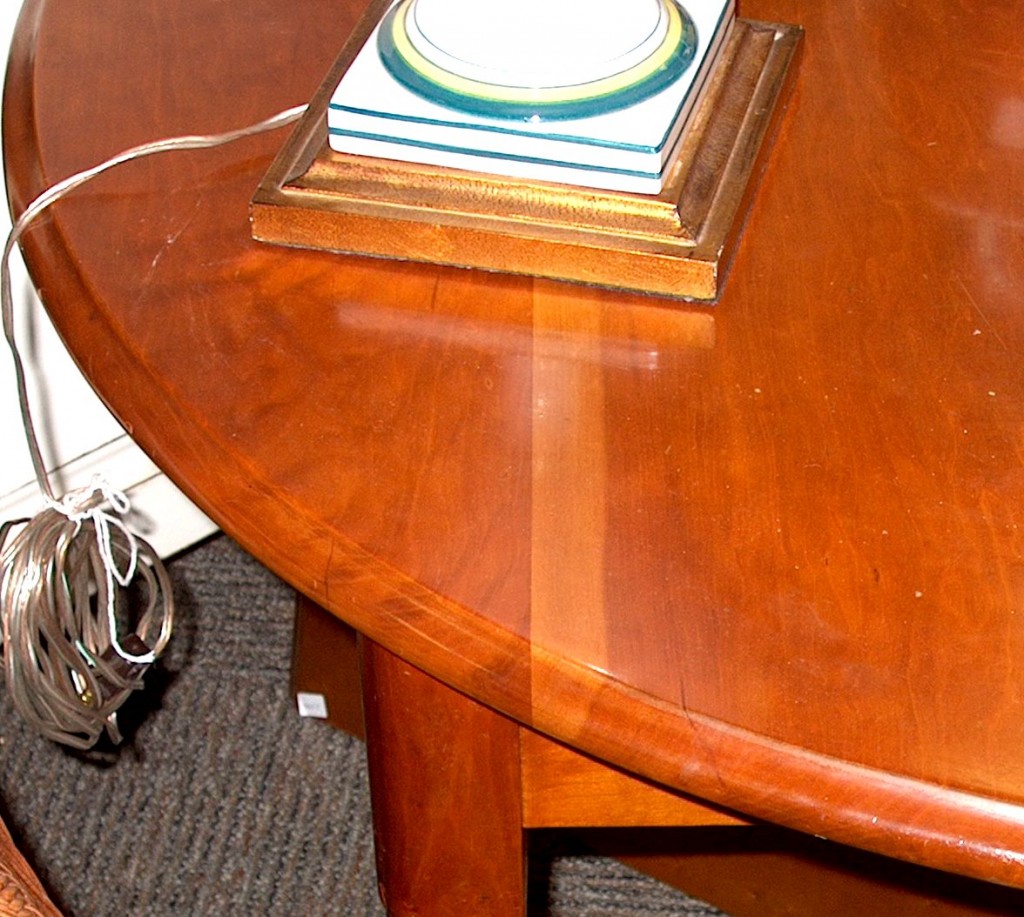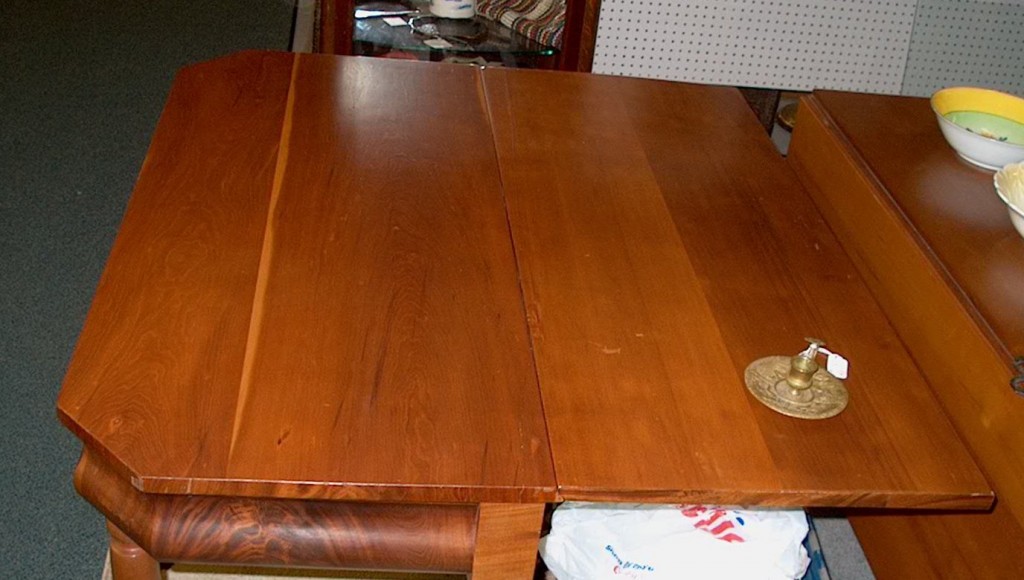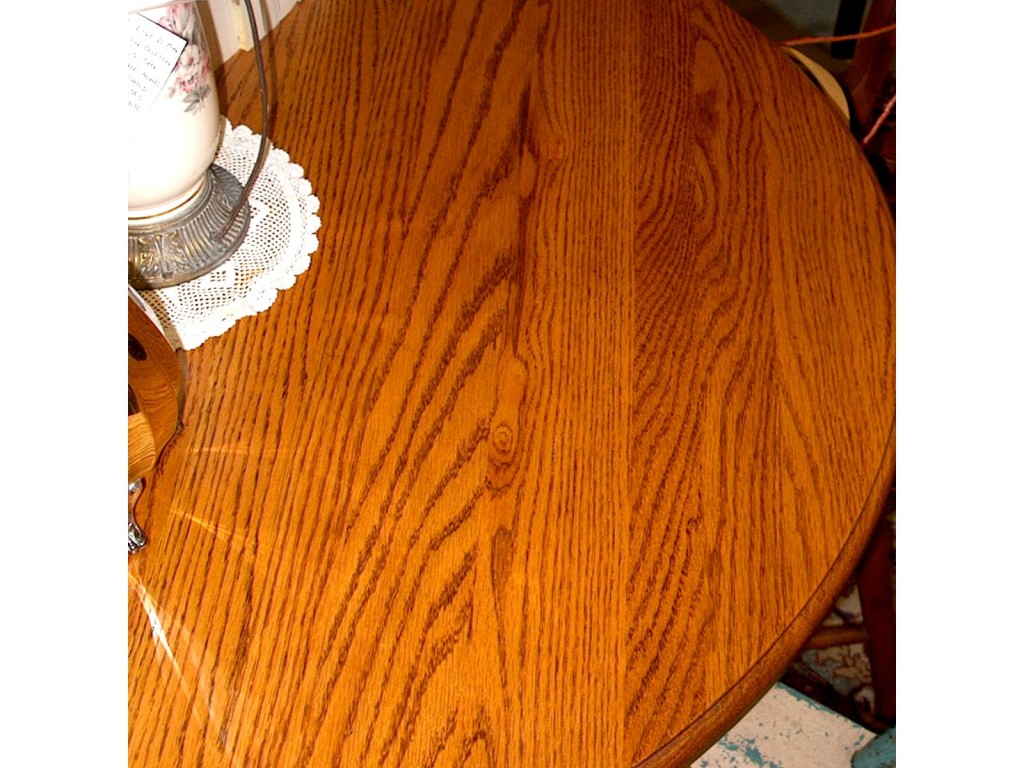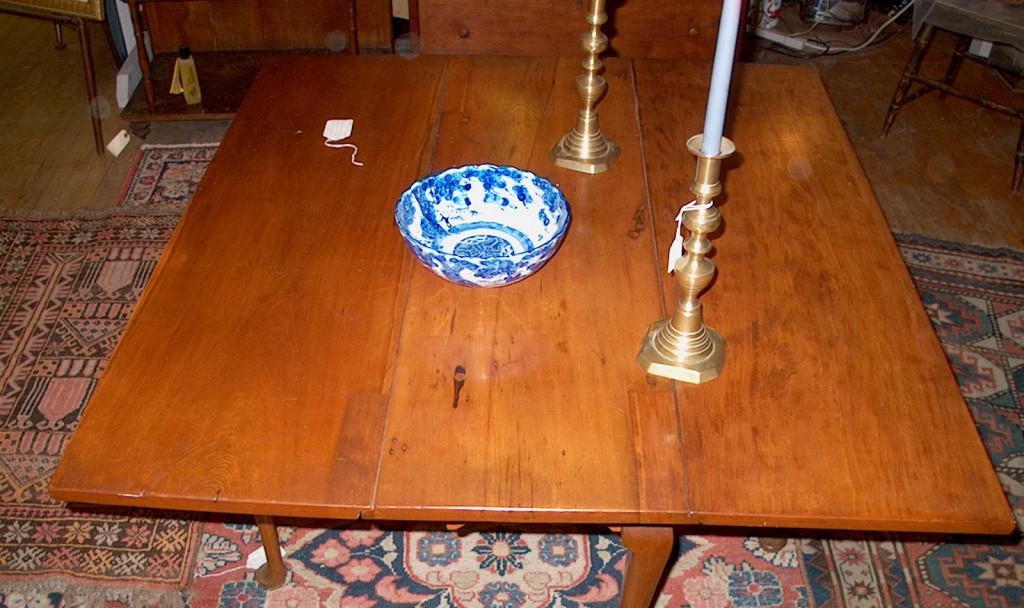(Part 2 of 3) As a wood lover, I would hope all furniture to be kept and enjoyed for years if not decades. All too often, furniture is replaced before the end of its useful life. A visit to a local resale/antique store found some pieces of furniture with perhaps less than ideal board matches.
 This table, which showed almost no signs of use, had a strip of sapwood along the edge of just one of the boards in the top.
This table, which showed almost no signs of use, had a strip of sapwood along the edge of just one of the boards in the top.
 This older table has a full length strip of sapwood and a short one along the edges of one of the boards. The sapwood is not used artistically, and is simply distracting.
This older table has a full length strip of sapwood and a short one along the edges of one of the boards. The sapwood is not used artistically, and is simply distracting.
 This table has a very disorienting collection of brain patterns and directions. It is not surprising the table shows no wear.
This table has a very disorienting collection of brain patterns and directions. It is not surprising the table shows no wear.
 Finally, here’s an older table with three very different boards. The left one is very uniform, the middle one shows some character, and the right one has wonderful figure. None of the three match any of the others, which it is suggested makes the table less pleasing in time.
Finally, here’s an older table with three very different boards. The left one is very uniform, the middle one shows some character, and the right one has wonderful figure. None of the three match any of the others, which it is suggested makes the table less pleasing in time.
People develop levels of attachment to items they own, including furniture. These attachments can have visual, emotional, functional, and financial components. The stronger the attachments, the more satisfying is ownership. Good board matching assists strong visual attachment, while repeated viewing of poor board matches may foster disappointment, frustration, and early replacement, decreasing economic value to the owner.
